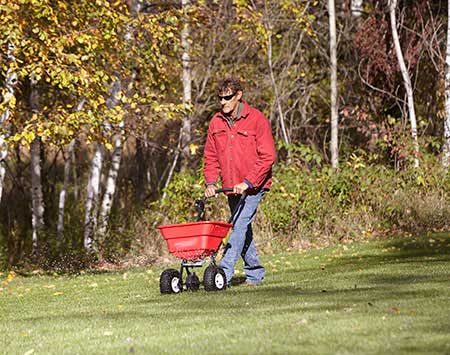TheFamilyHandyman.com
 |
| Spread with care
As much as fertilizer can be a valuable tool to keep a lawn healthy, dense and great looking, it can also create environmental concerns if not used responsibly.
|
“It’s not the use of phosphorus and other nutrients that are creating environmental issues; it’s the misuse of them.”
As much as fertilizer can be a valuable tool to keep a lawn healthy, dense and great looking, it can also create environmental concerns if not used responsibly. Too often I see people not paying attention when fertilizing. They’re in a hurry or just don’t care. They think the little bit of fertilizer that gets washed off your lawn and into the street doesn’t matter. But what if all your neighbors thought this? Or worse yet, every lawn owner in your town? Not only can we help our environment by using less fertilizer, we can do even more by making sure it stays where it’s intended.
Never apply any type of fertilizer close to wetlands, rivers, streams, lakes and ponds. We’re trying to grow lawn grasses, not aquatic weeds. Heavy nutrient loads in these types of water features will create excessive weed growth and algae blooms. Nobody wants that. Stay at least 6 to 8 ft. away from water when applying fertilizer.
After you’re done fertilizing, sweep up and collect what remains on hard surfaces, such as your driveway, sidewalk or street. If fertilizer is left on these surfaces, rains will eventually wash it into water features and storm sewers.
Never apply fertilizer to frozen ground. This can easily happen in the spring if you’re anxious to apply your crabgrass preventer. If the ground is still frozen, it’s too early to apply crabgrass preventer anyway. In short, be a good environmental steward.
No comments:
Post a Comment